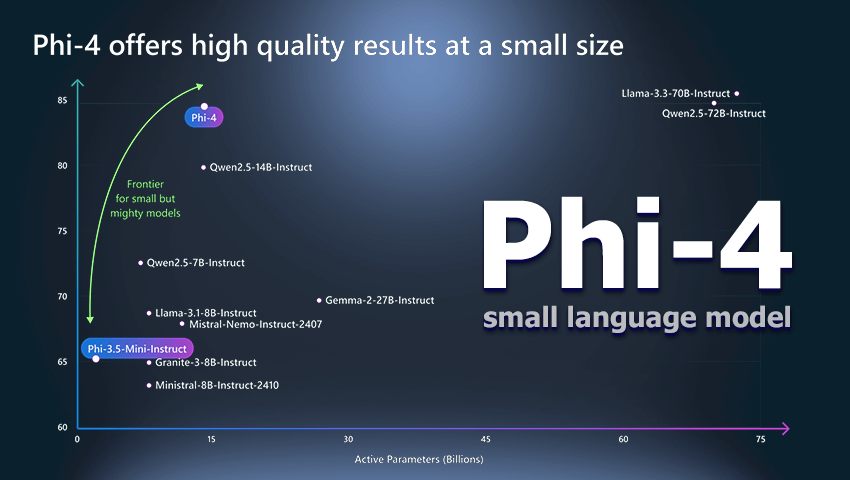Cybersecurity in Value-Based Care Platforms: Protecting Patient Data in a Digital Age
The healthcare industry is undergoing a monumental shift toward value-based care (VBC)platforms, emphasizing better patient outcomes, cost-efficiency, and personalized care. At the heart of this transformation are digital platforms that integrate data to deliver proactive, coordinated care. But with great digital innovation comes an even greater responsibility: safeguarding patient data. In a world where cyberattacks are becoming increasingly sophisticated, ensuring the security of sensitive health information isn’t just a regulatory requirement—it’s a matter of trust and patient safety. Let’s dive into why cybersecurity is critical for value-based care platforms and how it can empower patients, providers, and payers alike. The Stakes: Why Cybersecurity Matters in Value-Based Care Meet Maria, a 63-year-old managing diabetes and hypertension. Thanks to her healthcare provider’s value-based care platform, Maria’s data—from wearable devices to lab results—is seamlessly shared across her care team. This integration allows her doctors to collaborate, monitor her health in real time, and intervene proactively to prevent complications. But what happens if that data falls into the wrong hands? A breach could mean more than just stolen information. For Maria, it could lead to delays in care, increased anxiety, and even medical identity theft. For her provider, it could mean hefty fines, reputational damage, and lost trust. This scenario underscores the importance of robust cybersecurity in value-based care. Without it, the very platforms designed to improve health outcomes could become liabilities. Cyber Threats in Healthcare: A Growing Concern Healthcare has become a prime target for cybercriminals, and value-based care platforms are no exception. Here are some common threats: Ransomware Attacks: Hackers encrypt sensitive data and demand payment to restore access. Such attacks can disrupt patient care and cost millions. Phishing Scams: Cybercriminals trick employees into revealing login credentials, giving them unauthorized access to patient records. Data Breaches: Weak security measures can allow hackers to steal large volumes of patient data, which can be sold on the dark web. Insider Threats: Malicious or negligent employees may compromise data security, intentionally or inadvertently. According to recent studies, healthcare breaches cost the industry an average of $10.93 million per incident—the highest among all industries. These attacks are not just financial burdens; they can have life-threatening consequences when systems go offline. Key Pillars of Cybersecurity in Value-Based Care Platforms Building a secure value-based care platform requires a multi-layered approach. Here are the critical pillars: Data Encryption: All patient data, whether in transit or at rest, should be encrypted. This ensures that even if data is intercepted, it cannot be read without the decryption key. Access Control: Restrict access to patient data based on roles and responsibilities. For example, Maria’s primary care physician may have access to her complete health record, but her dietitian may only need dietary and metabolic data. Multi-Factor Authentication (MFA): Requiring multiple forms of verification reduces the risk of unauthorized access. Even if a hacker steals a password, they would still need a second factor (like a text message code) to gain entry. Real-Time Monitoring: Platforms should continuously monitor for unusual activity, such as multiple failed login attempts or unauthorized access to large volumes of data. Advanced tools powered by AI can detect and respond to threats in real time. Employee Training: Human error is one of the leading causes of cyber incidents. Regular training ensures that staff recognize phishing attempts, use strong passwords, and follow security best practices. Compliance with Regulations: Value-based care platforms must adhere to standards like HIPAA (Health Insurance Portability and Accountability Act) and GDPR (General Data Protection Regulation). These frameworks provide guidelines for securing sensitive health data. The Human Side of Cybersecurity While technology plays a vital role in protecting data, the human element is equally important. Here’s how cybersecurity impacts patients, providers, and payers: For Patients: Security measures protect personal health information, ensuring that patients like Maria can trust their providers and focus on their health rather than worrying about data breaches. For Providers: Robust cybersecurity fosters confidence in digital tools, enabling providers to leverage technology without fear of compromising patient safety. For Payers: Insurance companies benefit from secure data exchanges, reducing the risk of fraud and enhancing collaboration with providers. Balancing Security and Accessibility One of the challenges in cybersecurity is balancing security with usability. Overly strict measures can hinder work

The healthcare industry is undergoing a monumental shift toward value-based care (VBC)platforms, emphasizing better patient outcomes, cost-efficiency, and personalized care. At the heart of this transformation are digital platforms that integrate data to deliver proactive, coordinated care. But with great digital innovation comes an even greater responsibility: safeguarding patient data.
In a world where cyberattacks are becoming increasingly sophisticated, ensuring the security of sensitive health information isn’t just a regulatory requirement—it’s a matter of trust and patient safety. Let’s dive into why cybersecurity is critical for value-based care platforms and how it can empower patients, providers, and payers alike.
The Stakes: Why Cybersecurity Matters in Value-Based Care
Meet Maria, a 63-year-old managing diabetes and hypertension. Thanks to her healthcare provider’s value-based care platform, Maria’s data—from wearable devices to lab results—is seamlessly shared across her care team. This integration allows her doctors to collaborate, monitor her health in real time, and intervene proactively to prevent complications.
But what happens if that data falls into the wrong hands? A breach could mean more than just stolen information. For Maria, it could lead to delays in care, increased anxiety, and even medical identity theft. For her provider, it could mean hefty fines, reputational damage, and lost trust.
This scenario underscores the importance of robust cybersecurity in value-based care. Without it, the very platforms designed to improve health outcomes could become liabilities.
Cyber Threats in Healthcare: A Growing Concern
Healthcare has become a prime target for cybercriminals, and value-based care platforms are no exception. Here are some common threats:
Ransomware Attacks: Hackers encrypt sensitive data and demand payment to restore access. Such attacks can disrupt patient care and cost millions.
Phishing Scams: Cybercriminals trick employees into revealing login credentials, giving them unauthorized access to patient records.
Data Breaches: Weak security measures can allow hackers to steal large volumes of patient data, which can be sold on the dark web.
Insider Threats: Malicious or negligent employees may compromise data security, intentionally or inadvertently.
According to recent studies, healthcare breaches cost the industry an average of $10.93 million per incident—the highest among all industries. These attacks are not just financial burdens; they can have life-threatening consequences when systems go offline.
Key Pillars of Cybersecurity in Value-Based Care Platforms
Building a secure value-based care platform requires a multi-layered approach. Here are the critical pillars:
- Data Encryption:
All patient data, whether in transit or at rest, should be encrypted. This ensures that even if data is intercepted, it cannot be read without the decryption key.
- Access Control:
Restrict access to patient data based on roles and responsibilities. For example, Maria’s primary care physician may have access to her complete health record, but her dietitian may only need dietary and metabolic data.
- Multi-Factor Authentication (MFA):
Requiring multiple forms of verification reduces the risk of unauthorized access. Even if a hacker steals a password, they would still need a second factor (like a text message code) to gain entry.
- Real-Time Monitoring:
Platforms should continuously monitor for unusual activity, such as multiple failed login attempts or unauthorized access to large volumes of data. Advanced tools powered by AI can detect and respond to threats in real time.
- Employee Training:
Human error is one of the leading causes of cyber incidents. Regular training ensures that staff recognize phishing attempts, use strong passwords, and follow security best practices.
- Compliance with Regulations:
Value-based care platforms must adhere to standards like HIPAA (Health Insurance Portability and Accountability Act) and GDPR (General Data Protection Regulation). These frameworks provide guidelines for securing sensitive health data.
The Human Side of Cybersecurity
While technology plays a vital role in protecting data, the human element is equally important. Here’s how cybersecurity impacts patients, providers, and payers:
For Patients:
Security measures protect personal health information, ensuring that patients like Maria can trust their providers and focus on their health rather than worrying about data breaches.
For Providers:
Robust cybersecurity fosters confidence in digital tools, enabling providers to leverage technology without fear of compromising patient safety.
For Payers:
Insurance companies benefit from secure data exchanges, reducing the risk of fraud and enhancing collaboration with providers.
Balancing Security and Accessibility
One of the challenges in cybersecurity is balancing security with usability. Overly strict measures can hinder workflow efficiency, while lax measures expose vulnerabilities. Value-based care platforms must strike the right balance, ensuring that data is secure yet accessible to authorized users when and where they need it.
The Path Forward: Building Resilient Systems
As value-based care platforms continue to evolve, cybersecurity must remain a top priority. Here are some strategies for the future:
Investing in Advanced Technologies: AI and machine learning can enhance threat detection and automate responses to potential breaches.
Fostering Industry Collaboration: Sharing threat intelligence across healthcare organizations can help identify and mitigate risks more effectively.
Engaging Patients in Security: Educating patients about safeguarding their own data—such as using strong passwords for patient portals—adds an extra layer of protection.
Conclusion
Cybersecurity in value-based care platforms isn’t just about compliance or avoiding fines. It’s about safeguarding the trust that underpins the patient-provider relationship. By prioritizing security, we can ensure that platforms designed to enhance health outcomes do so safely and effectively.
For Maria and millions like her, that trust is invaluable. It’s what allows her to embrace digital tools as allies in her health journey, knowing her most sensitive information is in safe hands. And in a digital age, that trust is the foundation of truly transformative care.











_Wavebreakmedia_Ltd_FUS1407_Alamy.jpg?#)









